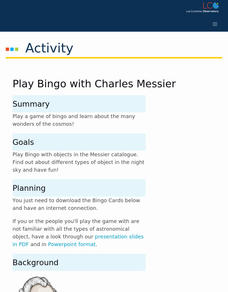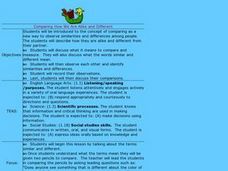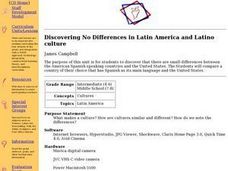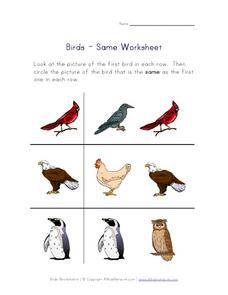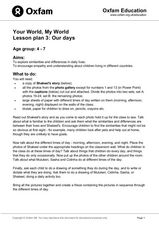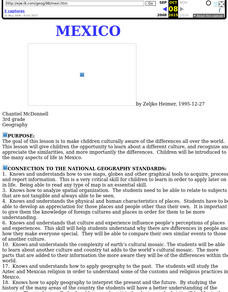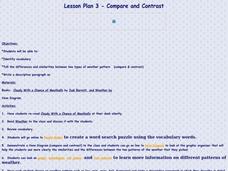College Board
2016 AP® Microeconomics Free-Response Questions
How can a bakery—one of several in town—maximize its profits? A case study from College Board asks scholars to consider the question. Other practice queries examine the price and benefits of buying certain goods for one consumer and look...
College Board
2008 AP® Statistics Free-Response Questions Form B
To know what is on the test would be great. The six free-response question from the second form of the 2008 AP® Statistics gives pupils an insight into the format and general content of the exam. Each question requires the test...
Radford University
Pizza, Pizza!
Ponder the problem of pizza prices. Pupils use provided information about two different pricing schedules for pizza. They create tables of values and functions to represent the pricing schemes, consider domain restrictions, and identify...
Radford University
Linear Programming: Sports Shoes
Don't shoo away the resource on shoes. Given constraints on the amount of leather and string needed to make two different types of shoes, learners graph a system of inequalities for the situation. They then determine the maximum profit...
Aquarium of the Pacific
Kelp Forest Habitat
What forest is in the ocean? The class watches a video that introduces the kelp forest and the parts of kelp. Learners dive into the ocean and see what different species live near the canopy, the midwater, and the bottom of the kelp...
US Department of Commerce
How Are Single-Parent Households Distributed Across the United States?
There sure are a lot of single-parent households in the country. After selecting one of four US regions to investigate, pupils create dot plots and box plots on the percentage of single-parent households with male parents and female...
Las Cumbres Observatory
Play Bingo with Charles Messier
Let's play an out-of-this-world Bingo game! Using pre-made Bingo cards and an online randomizer, host a game of Bingo to practice identifying the objects of the cosmos. Pupils must match a picture shown to a similar picture on their...
Curated OER
Similarities Attract
Students research all the ways people seek their soulmates. The question if opposites attract or those with similar attractions is studied in depth. Compile all the many steps a scientist must often take to answer what looks like a...
Curated OER
Comparing How We Are Alike and Different
Students introduced to comparing as a way to observe differences among people.
Curated OER
Ratio Relationships
Students solve for the different ratio and proportion of a problem. In this geometry lesson, students show their knowledge of how to solve proportional relationships. They convert between percent, decimals and fractions.
Curated OER
I am Special and You are Special Too #9
Eighth graders will explore the rhythm and rhyme of poems to understand the basic elements of poetry. In this poetry and literary lesson, 8th graders relate their love for rap music to poetry. Students will discuss...
Curated OER
Incorporating Reading Comprehension Using Cinderella Stories from Different Lands
First graders investigate Cinderella tales from different lands to discover their commonalities in this unit. They perform their favorite Cinderella story.
Curated OER
A Visit to the Vet
Students identify the differences and similarities between doctors for humans and veterinarians. Students draw a pet's visit to the veterinarian's office and a person's visit to a doctor's office. Students describe exactly what they have...
Curated OER
Vocabulary Multiple Choice Worksheet 12
In this advanced ESL vocabulary worksheet, students read 10 sentences that contain missing words. Students analyze the 4 similar word choices given and select the word that will correctly complete the sentence.
Curated OER
Comparing Different Types of Corn
Students explore different types of corn. In this science lesson, students compare sweet corn, field corn and Indian corn. Students gather specific information. Additionally, students discuss their findings.
Curated OER
Culture Sharing:
Students share their unique cultures with others in the class and identify with different cultures from their own. Students use their English speaking skills to work with the other students from the same or nearby country. Students...
Curated OER
Discovering No Differences in Latin America and Latino Culture
Students explore the differences between American Spanish speaking countries and the United States. Students explore the history and culture of Spanish speaking countries. They examine Latino influences. Students create a presentation...
Curated OER
Birds - Same Worksheet
In this worksheet on finding similarities, learners look at 3 rows of pictures and determine which bird in each row is the same as the first bird in each row.
Curated OER
Your World, My World
Students investigate what is the same and what is different in the daily lives of children around the world. In this citizenship lesson, students develop compassion for others through understanding how their lives are the same and...
Curated OER
Density Demonstration: Coke vs. Diet Coke
In this density demonstration, students compare a can of diet coke to a can of regular coke. They list the similarities and differences of each prior to the demonstration. The cans are placed in a tank of water and students record their...
Curated OER
Mexico
Third graders become culturally aware of the differences all over the world. They explore a different culture, and recognize and appreciate the similarities and differences with their own.
Curated OER
Protesting through Art
Students experience critiquing, analyzing, and comparing different works of art from different eras. They discuss how these works can or can't be considered a form of protest and assess how to evaluate their own judgments and values on...
Curated OER
Compare and Contrast
Students learn about similarities and differences between different types of weather patterns. In this weather lesson, students read Cloudy With a Chance of Meatballs and Weather. Students create a word search puzzle,...
Curated OER
Guess Who? Coral
Fourth graders identify and group coral formations. In this coral identification lesson, 4th graders examine coral pictures, discuss vocabulary, and provide similarities and differences in the growth formations.






